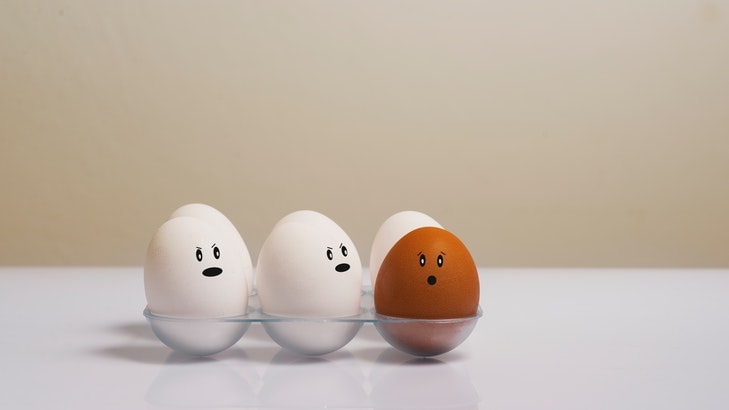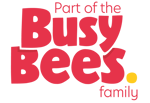By Julie Belair-Bak
Children develop and grow differently, they grow in response to their experiences and to their environment. Growth and development are individual and vary from child to child. When considering how your child learns and how you might support your child’s learning remember there are only five doors to your child’s brain. The senses are the doors to your child’s brain, sight, hearing, taste, touch, and smell. Engaging as many of your child’s senses while playing will propel and fuel their learning.
At Scholar’s Choice we support children learning through play and children require the following opportunities to achieve their hopes and dreams!
Playful Learning Approach:
- Children should self-direct their own play.
- Children develop social and emotional skills through cooperative play.
- Children explore and learn with all five senses.
- Children require endless opportunities for discovery-based play.
- Children need multiple opportunities to express themselves.
Children are busy developing: cognitively, socially, physically and, toys are essential for their development. Play is the work of children and ample opportunity for play is required for children to reach their full potential. Children learn about the world and use play to make sense of what they see and experience.
Playing with your children is essential and remembering that your child needs to lead the play is critical. Children will move from one toy to another often and change the flow of play to suit their needs. A toy that appears to you to be used one way could be used completely differently by a child. The child is not wrong they are experimenting and learning as they play.
As you play with your child resist correcting your children’s play, all positive play is good and moving your child’s development forward. Allow your child to lead the play, you are an active participant following their lead which can be a challenge as I shared play changes frequently and fast. You will know if you are leading the play because your child will lose interest and is not be engaged.
Toys that offer open-ended like blocks or loose parts are always a great toy to play with your child. You can be building a house and the next minute it is a barn, or you find the pieces have been knocked down in preparation to the next great idea your child wants to develop. Avoid questioning or telling children not to knock down a creation they are merely making room for their next amazing creation. Children need repetitive play to become experts and repetitive play requires toys and lots of free unstructured play time.
Ages and Stages
6 months to 1 year
Cognitive:
- Developing interests in schematic play, open/ shut, push /pull, drop/ pickup
- Remembers simple events, people objects, and games (peek a boo is always a great favorite)
Social:
- Begins to imitate others
- Recognizes their own name
- Can identify objects, body parts, and simple commands
Physical:
- Begin to move around, crawling, walking along furniture and walking could all be apart of this stage of development.
- Begins to hold objects in one hand
- Enjoys routines (i.e., bath time)
- Finds hidden objects
Best Toys
Penguin Musical Wobbler
Explore and more egg shakers
Dimpl
Skip Hop Farmstand Grow & Play Activity Gym
1 year to 2 years
Cognitive:
- Begins to mark make – print, draw, or make marks
- Drawn to items that move or can be moved
- Begin to point to objects when asked
- Can start to sort simple items
- Speaks and understands combined words
Social:
- Imitates adult actions
- Begins pretend play
- Expresses affection
- Begins to assert independence (tantrums can be the results)
- Follows simple direction
Physical:
- Very active, developing large gross muscle skills
- Walks steadily
- Strong awareness of senses
- Continues with schematic play, open/ shut, push /pull, drop/ pickup
Best Toys
Busy Stack Shapes and Squishies
Spoolz
Shape Sorter Xylophone
Mix and Match Animals
2 years to 3 years
Cognitive
- Begin to develop math concepts, counting, sorting, and colors
- Grouping, patterning, and sorting are a part of regular play
- Begins to solve problems in their head
- Dramatic play continues – essential for self-expression
- Loves the sensory experience of messy play, textures are interesting as they explore learning through their senses
Social:
- Language is rapidly developing, uses 100 plus words
- Can identify colours and some numbers
- Asks and answers questions
- Recognizes self in photos
- Enjoys simple stories
Physical:
- Likes to take things apart
- Begins to have greater control over their body, attempts jumping, rolling, and hanging
- Throws and retrieves objects
- Working on standing on one foot
Best Toys
Mix and Match Animals
Marble Runway
Fantasy Hopper
Dress Me Owl
Giraffe Activity Center
3 Years to 5 Years
Cognitive
- Curious and creative
- Growing interest in numbers and developing an understanding of numeracy
- Matches and sorts
- Dramatic or fantasy play is a part of everyday
- Copies letters and numbers
Social
- Understands who, what, where and why questions
- Begins to understand what print letters are used for
- Tells stories and loves to explore imaginative play
- Development of friends
- Hates to lose – social-emotional development is a struggle at this age, try cooperative games as a starting point for overcoming this challenge.
Physical
- Likes to change tasks frequently – a selection of educations toys and manipulative if essential for this age
- Developing fine motor skills – can cut with scissors, crafts are enjoyed by this age group
- Loves outdoor play – developing a love for the outdoors and exploring nature is a marvelous way to ignite both math and science interests
- Block building is critical to our success
Best Toys
Deluxe Easel Magnetic All in 1
Fill and Roll Grocery Basket
Alphabet Bingo Board Game
Spot it
Bee-Bot
Magical Magnets 96 piece set
All children grow and move from one developmental stage to the next at different times. When you look at your child and compare them to other children, consider what your child can do. Focus on the positives and celebrate their accomplishments. If you see a skill that your child has not mastered think about what you could do to support that next stage of development. The use of toys, books, songs, and social engagement to propel and scaffold or move your child to the next level of development
It is critical that you do not make your child feel bad about themselves as a healthy, happy child is the goal for all parents. Ages and stages are a guideline, not developmental milestones that must be achieved in order or by a certain age. Be proud of your child’s accomplishments, and they too will share in that pride. Happy children are always the most successful children in school, at home, and in life.
All Toy recommendations are from Scholar’s Choice







